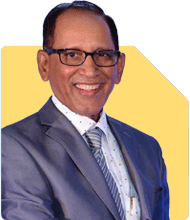R P Yadav | Answer |Ask -Follow
HR, Workspace Expert - Answered on Mar 14, 2024
Over the years, he has been the recipient of numerous awards including the Lifetime Achievement Award from World HR Congress and HR Person Of The Year from Public Relations Council of India.
... more

My son is doing MS dual degree in Electronics and communication with research in robotics from IIIT HYDRABAD.What is job opportunities with him after completing his dual degree in robotics in India .
Robotics Engineer: As a robotics engineer, he can work on designing, building, and maintaining robotic systems. This role involves programming, hardware integration, and problem-solving.
Hardware Architect: Hardware architects focus on designing the physical components of robots, including sensors, actuators, and control systems.
ROS Developer: ROS (Robot Operating System) is widely used in robotics research and development. A ROS developer creates software modules for robots using this framework.
Automation Engineer: Automation engineers develop solutions to automate processes in various industries. They work on integrating robots into manufacturing lines, warehouses, and logistics.
Electrical Engineer: Robotics often involves intricate electrical systems. An electrical engineer can specialize in designing and optimizing these systems for robots.
Project Engineer: Project engineers manage robotics projects from conception to implementation. They coordinate teams, budgets, and timelines.
For experienced professionals, there are higher-level positions such as:
Research Manager: Leading research projects related to robotics and automation.
Senior Robotics Engineer: Contributing to advanced robotics systems.
Motion Planning Specialist: Focusing on algorithms for robot movement.
Senior Research Associate: Engaging in cutting-edge research.
Senior Project Manager: Overseeing large-scale robotics initiatives.
Chief Technical Officer: Providing strategic direction for robotics companies.
Areas of Recruitment: Your son can find opportunities in various sectors, including:
Manufacturing: Robotics is transforming manufacturing processes, and companies seek skilled engineers.
Automobile Industry: Autonomous vehicles and robotics play a crucial role in automotive innovation.
Medical Robotics: From surgical robots to telemedicine, healthcare relies on robotics.
Defense Sector: Robotics is used for surveillance, bomb disposal, and reconnaissance.
IoT (Internet of Things): Robotics intersects with IoT, creating smart devices and systems.
Salary Packages: Fresh graduates with a B.Tech in Robotics Engineering can expect an average salary ranging from INR 4 to 10 LPA depending on the sector and job role. Practical experience and specialization influence pay1.
In summary, the field of robotics offers diverse and rewarding career paths, and your son’s dual degree in electronics and communication with a focus on robotics positions him well for these exciting opportunities!
You may like to see similar questions and answers below
Chocko Valliappa |539 Answers |Ask -Follow
Tech Entrepreneur, Educationist - Answered on Feb 01, 2024
Chocko Valliappa |539 Answers |Ask -Follow
Tech Entrepreneur, Educationist - Answered on Mar 22, 2024
Chocko Valliappa |539 Answers |Ask -Follow
Tech Entrepreneur, Educationist - Answered on Mar 26, 2024
Dr Dipankar Dutta |1837 Answers |Ask -Follow
Tech Careers and Skill Development Expert - Answered on Sep 03, 2024
Dr Dipankar Dutta |1837 Answers |Ask -Follow
Tech Careers and Skill Development Expert - Answered on Dec 05, 2025
Dr Shyam Jamalabad |108 Answers |Ask -Follow
Dentist - Answered on Dec 05, 2025
Dr Shyam Jamalabad |108 Answers |Ask -Follow
Dentist - Answered on Dec 05, 2025
Dr Shyam Jamalabad |108 Answers |Ask -Follow
Dentist - Answered on Dec 05, 2025
Dr Dipankar Dutta |1837 Answers |Ask -Follow
Tech Careers and Skill Development Expert - Answered on Dec 05, 2025
Ulhas Joshi |280 Answers |Ask -Follow
Mutual Fund Expert - Answered on Dec 05, 2025
Dr Dipankar Dutta |1837 Answers |Ask -Follow
Tech Careers and Skill Development Expert - Answered on Dec 04, 2025
Ravi Mittal |676 Answers |Ask -Follow
Dating, Relationships Expert - Answered on Dec 04, 2025
Anu Krishna |1745 Answers |Ask -Follow
Relationships Expert, Mind Coach - Answered on Dec 04, 2025
Anu Krishna |1745 Answers |Ask -Follow
Relationships Expert, Mind Coach - Answered on Dec 04, 2025



























